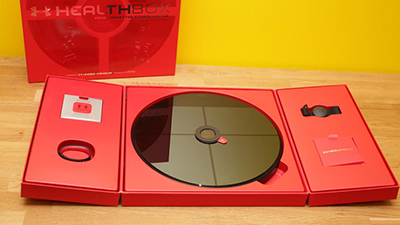As technologies used by fitness wearables mature, medical laboratories will want to develop ways to access and process the flood of data that will become available
Point-of-care testing and remote patient monitoring are two technologies that could be disruptive to the clinical laboratory industry, particularly if use of these devices was to reduce the volume of patient specimen that are referred to the nation’s large, centralized medical laboratories.
This is one reason why savvy pathologists watch the stream of new products designed to allow athletes and consumers to monitor their fitness and other characteristics of good health. These devices are at the very front of the curve for remote monitoring of an athlete’s performance during training and competition, as well as enabling consumers to track different parameters of their health. What’s a toy for today’s sophisticated consumers could later be easily adopted for clinical diagnostic purposes.
One great example of how swiftly technology advances are changing remote diagnostic monitoring involves heart rate monitors. It wasn’t long ago that even basic heart rate monitors were a pricey purchase for consumers. But thanks to strong interest in gathering healthcare data, costs are dropping.
And while many new fitness tracking and wearable technologies that are marketed to professional athletes may still be too costly for average consumers, improvements in technology and growing interest in health-related wearables are making such devices more affordable. In fact, even now, companies are teaming up to release entire kits for in-home health monitoring that cost less than many clinical laboratory tests.
As prices continue to drop for these devices, features continue to rise. No longer limited to basic metrics—such as steps taken or estimated calorie burn—the newest generation of wearable fitness gear allows for accurate:
• heart rate tracking
• pulse oximetry readings
• lactic acid tracking, and,
• other biomarkers typically limited to hospital or medical laboratory settings.
What the Shift Toward an Internet of Things Means for Collecting Health Data
True potential for gathering data comes when these wearables are paired with a smartphone or computer. Using Apple’s HealthKit or the Google Fit platforms, many wearable devices are capable of relaying information, processing data, and analyzing trends.
One important aspect of this shift toward using an Internet of Things (IoT) to augment healthcare is the need for medical laboratories and other service providers to find ways to collect, manage, and organize the large quantity of data that these wearable devices generate.
Electronic Health Record (EHR) providers are already working on ways to interact with this constant stream of data, as the recent integration between Epic and HealthKit demonstrates.
The two companies describe this as an “app prescription” model. It is designed to allow the requesting medical professional to set important thresholds, designate which biomarkers to track, and set a duration for logging. This means that the clinician will receive a set of data that is already optimized and segmented for the exact procedure or test that they want. Better still, a physician, dietician, and pathology lab can all request specific sets of data and potentially receive concurrent results from a single device and monitoring period.
Instead of leaving monitoring and reporting in the hands of the patient, a medical professional requests biomarker monitoring through Epic. All reporting is handled by the MyChart app on the patient’s phone. By allowing the devices to automatically log data, lab technicians can also eliminate inconsistent or false reporting from patients.

Under Armour Health Box with fitness band, chest strap and smart scale (Photo Copyright: CNet.)
Obstacles Facing Fitness Wearables for Medical Monitoring
Fitness wearables still face an uphill battle before they are common enough to become a standard method of gathering data for clinical care, including monitoring health or helping with diagnosis.
The first obstacle is cost: While health insurance will cover the price of a medical laboratory test, it won’t cover a FitBit or a smart scale. This leaves the consumer shouldering the financial burden of the monitoring.
The fact that most wearables cannot process or analyze their own data further compounds the cost concerns. While the device itself might be cheaper than a clinical lab test, the cost to purchase and maintain a smartphone might not. Samsung is currently working on an all-in-one Bio-Processor that might help address this issue. (See Dark Daily, “Samsung’s New All-in-One Bio-Processor Chip Launches Amid Controversy Among Physicians and Medical Laboratory Professionals over the True Value of Wearable Health-monitoring Devices,” February 12, 2016.)
A second issue is that many of these biomarkers relate to activity. This was pointed out by The Next Web. Those that own the devices tend to be active, able-bodied people. If inactivity or disability is part of the need for health monitoring, the chances of a patient already owning a wearable fitness device is lower.
Finally, there’s the psychological pressure created by fitness wearables and the quantified self movement as highlighted by The Guardian in 2014. Knowing that you are 5,000 steps behind for the day, or that your blood sugar concentration is elevated due to a splurge at lunch, might impact sensitive biomarkers. This makes it critical that wearable-device manufacturers and medical teams find ways to account for and assess outside influences impacting the data before using them in a professional setting.
Although market demand and technological advances show great potential for both consumers and healthcare professionals, there are still a number of hurdles standing between the concept of wearables as medical devices and the reality of their current state.
—Jon Stone
Related Information:
Did Under Armour Shove Too Much Health into Its $400 Box?
HealthKit: Develop health and fitness apps that work together
How the Epic/HealthKit Integration Actually Works
Bio-Processor: All-in-One Quantified-Self Solution is Finally Here
5 psychological challenges facing wearables, quantified self and behavior change apps



